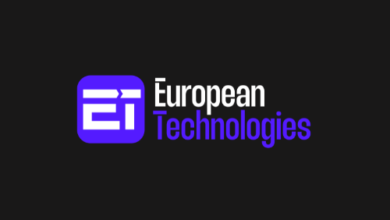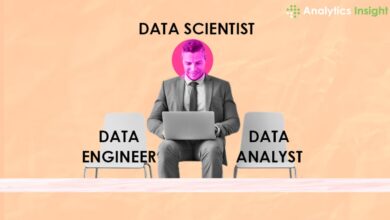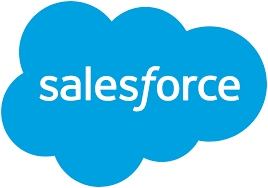What Is Prescriptive Analytics? Definition and 6 Examples

The Gist
- Data’s GPS. Prescriptive analytics isn’t just about forecasting what might happen; it tells businesses exactly where to turn next.
- Real-world advantage. From optimizing bank portfolios to enhancing customer experiences in hospitality, prescriptive analytics is reshaping industries one decision at a time.
Editor’s Note: This article has been updated on February 15, 2024 to include new data and information; the original content was authored by Lesley Harrison.
Nearly 65 zettabytes — that’s the total amount of data created, captured, copied and consumed globally in 2020, according to Statista. And experts predict that number will grow to more than 180 zettabytes by 2025.
This vast amount of information — both structured and unstructured data — that inundates businesses on a daily basis is often referred to as Big Data. And the challenge with Big Data isn’t necessarily gathering it, but pulling actionable insights from it due to size or complexity. Enter prescriptive analytics, a core pillar of data analytics that promises not just insight, but foresight.
What Is Prescriptive Analytics?
Prescriptive analytics is a branch of data analytics that offers recommendations based on current and historical data. Instead of simply describing or predicting trends, it pinpoints the best steps to take in any given scenario. Prescriptive analytics leverages advanced algorithms, including machine learning models, to transform insights into strategic decisions, positioning businesses to proactively navigate future challenges and opportunities.
Related Article: 5 AI Analytics Trends for CX Personalization
The 4 Types of Data Analytics
In the realm of data analytics, understanding the data’s story is essential, and data scientists need to use different approaches to extract useful insights. Let’s delve into the four primary types of data analytics that act as the cornerstones of any comprehensive data strategy:
- Descriptive Analytics: Answers the question “What happened?” Descriptive analytics can analyze data to understand past trends and patterns.
- Diagnostic Analytics: Answers the question “Why did it happen?” Diagnostic analytics delves deeper into data to find the cause of a particular event or trend. This process often involves more sophisticated techniques like data discovery and data mining.
- Predictive Analytics: Answers the question “What might happen in the future?” Predictive analytics forecasts future events based on past data by identifying patterns or trends.
- Prescriptive Analytics: Answers the question “What should we do?” Prescriptive data analytics provides recommendations or solutions for potential future scenarios based on the results of predictive analytics.
The Benefits of Prescriptive Analytics
How exactly does prescriptive analytics benefit organizations?
- Actionable Insights: Prescriptive models can transform raw data into concrete steps, ensuring organizations not only understand their data but act on it effectively. This actionable nature means decisions are data-backed, reducing reliance on gut feelings or intuition and reducing the potential for bias or emotion to creep in.
- Optimized Decision-Making: With prescriptive analytics optimization techniques, companies can evaluate various scenarios, choose the best course of action and predict the associated outcomes. This foresight enables leaders to make informed decisions that align with their organizational goals.
- Enhanced Operational Efficiency: By using prescriptive analytics tools, organizations can identify bottlenecks, streamline operations and improve resource allocation. As a result, daily tasks become more efficient, saving time and money.
- Forward-Looking Strategy: While other types of data analytics might be retrospective, prescriptive analytics is about the future. It offers a roadmap to help businesses prepare for upcoming challenges and pinpoint opportunities before they arise.
- Adaptability in an Evolving Market: Prescriptive analytics allows organizations to stay nimble, suggesting real-time adjustments based on current data, market trends and predictive insights.
- Increased Profitability: Guiding strategic decisions and optimizing operations doesn’t just improve workflow, it can directly boost the bottom line. Prescriptive analytics can be the starting point for improved financial performance and heightened profit margins.
- Competitive Edge: In today’s saturated market, every advantage counts. With insights from prescriptive analytics, businesses can differentiate themselves, offer unique value propositions and stay ahead of competitors.
Related Article: Customer Data, Analytics Top Priorities for Customer Service Leaders
6 Real-World Examples of Prescriptive Analytics
Prescriptive analytics is something that can be used by businesses of all sizes and in a variety of industries. Some real-world examples of prescriptive business analytics include:
Financial Services
Banks and other financial institutions use prescriptive analytics and prescriptive economic analysis to reduce risk. By looking at factors like credit history and economic trends, for example, banks can predict loan defaults, allowing them to adjust lending policies proactively and maintain a healthier portfolio.
Hospitality
In the world of hospitality, it’s essential to understand guests’ wants and needs. Hotels segment their customer base using prescriptive analytics, which allows them to promote more tailored packages and experiences. The result is improved customer satisfaction, leading to repeat bookings, positive reviews and potential brand advocates.
Retail
Whether people shop in stores or online, retail is an industry driven by consumer behavior. Retailers can use prescriptive analytics to forecast product demand based on historical sales and seasonal trends, meaning they can maintain optimal stock levels, ensure popular items are always available and reduce overstock costs.
Transportation
One major priority for transportation companies is efficient route planning. Airlines and freight companies use prescriptive analytics, factoring in variables like weather and fuel costs, to determine the quickest and most fuel-efficient routes. The result is timely deliveries and reduced operational costs.
Marketing
Prescriptive analytics helps marketers analyze emerging trends and data-driven insights, allowing them to fine-tune ad placements or content types. For instance, if younger audiences engage more with interactive polls on social media, marketers can adjust their strategies to feature more of that content, leading to greater reach and engagement.
Healthcare
Hospitals can use prescriptive analytics to improve patient care and operational efficiency. It allows them to forecast patient readmission rates or optimize bed allocations, meaning patients receive timely care while hospitals can maximize resource utilization.
How Prescriptive Analytics Work
At its core, prescriptive analytics is the culmination of insights gathered from diagnostic, descriptive and predictive analytics. Here’s a breakdown:
First, descriptive analytics lays the foundation by chronicling past events. It answers the question, “What happened?” by evaluating historical data. This forms the baseline upon which further analyses are constructed.
Next, diagnostic analytics delves deeper into the data to figure out why specific events or trends happened. By looking into root causes, it provides greater context and adds depth to our understanding of past events.
Building on this enhanced foundation, predictive analytics looks at patterns from historical data to predict potential future outcomes. Employing statistical algorithms and often complemented by machine learning, it offers insights into “What is likely to happen?”
Finally, prescriptive analytics enters the picture, synthesizing the insights from the descriptive, diagnostic and predictive phases. It uses advanced algorithms often powered by machine learning to suggest next steps businesses can take. Some organizations even develop proprietary algorithms tailored to their unique business needs and challenges. Unlike simple predictions, prescriptive analysis provides specific recommendations, answering “What should we do about it?”
Related Article: How AI and Data Analytics Drive Personalization Strategies
What’s the Difference Between Predictive and Prescriptive Analytics?
Predictive and prescriptive analytics both reside in the realm of advanced data analytics, but they serve different roles. Predictive analytics delves into the world of forecasting, leveraging historical data and statistical algorithms to pinpoint future trends and outcomes. It’s like having a weather forecast, but instead of predicting rain, it might predict next year’s potential sales.
Prescriptive analytics, on the other hand, takes this information and offers actionable recommendations. Think of it like a GPS system: It considers the weather forecast (predictive insights) to guide you on the best route. It merges predictive data with decision-making models and algorithms, often powered by machine learning, to suggest specific steps that can lead to a desired outcome. By combining the foresight of predictive analytics with actionable guidance, prescriptive analytics helps businesses make proactive and data-backed decisions.
Prescriptive Analytics Challenges
Despite the potential of prescriptive analytics, businesses must be aware of the inherent challenges that come with it.
Reliance on Quality Data
The accuracy of prescriptive statistics is reliant on the quality of data analyzed. Bad data can skew results, leading to misguided recommendations. Businesses must start their data analytics process with reliable data that is clean, updated and relevant. A healthcare organization, for example, would need accurate patient records to predict potential readmission rates effectively.
Business Rules & Regulations
To make sure that the recommendations from prescriptive analytics align with a company’s objectives and constraints, it’s necessary to include business rules. These rules can be complex, especially in industries with heavy regulation. Consider the financial sector, where banks might use prescriptive analytics to guide lending decisions but must do so within the boundaries set by industry regulations and internal risk parameters.
Scalability
As businesses grow, so does the volume of data they handle. Prescriptive analytics software, especially solutions based on cloud data warehouses, must be scalable to handle increasing data loads. Many businesses set up their systems without considering future growth, only to find them insufficient when trying to analyze data from expanded operations. Ecommerce companies, for instance, might witness rapid growth during sale periods, emphasizing the need for scalable analytics solutions.
Over-Reliance & Misinterpretation
While prescriptive analytics can be a powerful tool, businesses should be wary of relying on it too much without human input. There’s also a risk of misinterpreting recommendations, especially if the context isn’t clear. For instance, a manufacturing unit might receive a recommendation to increase production based on predicted demand, but without considering external factors like a looming industry strike.
Related Article: Customer Journey Analytics Basics for Better CX
Leveraging Prescriptive Analytics Techniques at Your Organization
It’s no wonder organizations are interested in prescriptive analytics. Better and faster decision-making is a place we’d all like to get to. Companies looking for the best possible business outcomes should be taking a serious look into how prescriptive analytics can help.



